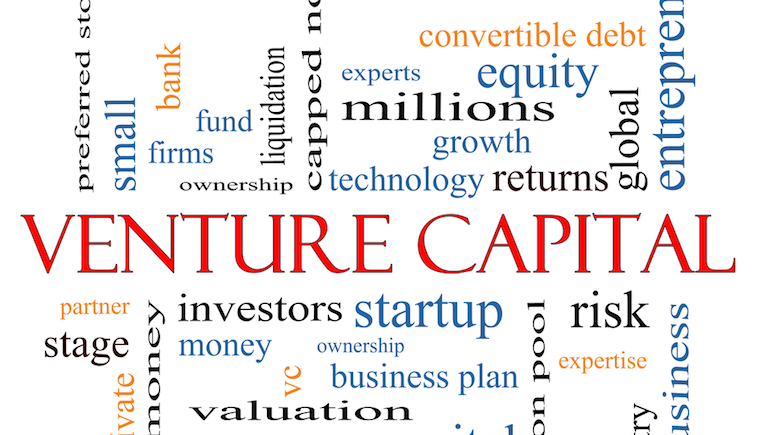9 sure fire signs that your life science asset is investable
We’ve interviewed dozens of life science venture capitalists for the production of our ebook we released last week in the run up to our VC focused event on 23 October to be held at Johnson & Johnson Innovations‘ office.
In that process we have identified the signs VCs look for when determining whether a technology is worth backing or not.
Here are the top 9:
You have something that is truly innovative.
VCs are looking for things that break the mould, things which are disruptive. There’s a lot of incremental innovation out there: things that are useful, small improvements - but that’s not really the kind of thing VCs are looking for. They are looking for ideas that can really shake up the healthcare space.
You product and technology meets a demonstrable market need.
You need to have a project that addresses an important unmet medical need. A lot of VCs now operate a “market backwards” approach rather than a “technology forwards” one. They are looking for the solution to a problem that they see in the marketplace, in clinical practice, where there is a huge need for something with a particular set of characteristics. If your technology meets that market need, you stand a good chance of getting backed.
You must know the competitive landscape
And exactly where the technology will fit in. An obvious point, but as Mike Capaldi of Edinburgh BioQuarter reminds us:
‘So, we’ve invented a drug or a diagnostic device, which fills a current need in the market. But who else is also working towards that goal? How well developed is their product? What potential advantages does your product have over theirs? You may not want to proceed if somebody else is already 2 years ahead of you with an equivalent product!’
You have thoroughly protected Intellectual property.
It’s a prerequisite from VCs that the IP on the technology is sound and watertight. It’s important that your IP and landscaping is right, to have your IP portfolio managed properly and to do it judiciously so not to have wasted money on rights you’re not going to use or things that aren’t core to your business. According to Simon Portman, a prominent patent attorney at Marks & Clerk, the biggest mistake he sees companies making is them thinking they own something when they don’t, by forgetting to actually sign their rights as individuals into the company, or making similar simple mistakes. You need to do your due diligence!
You have exceptional science and great data.
Sounds obvious, but if the data is solid, your asset stands a good chance of getting VC backing. Just as important as the data itself, is your willingness to be open, honest and transparent with your data. If there are any gremlins, VCs need to know early on. They don’t mind a little technical risk. They do, however, mind dishonesty.
There is a clear potential exit in a fixed time frame.
Unless you are appealing to an evergreen fund, most VCs need to see a return on their investment within 3-5 years. If your project can demonstrate this potential, that is a major box ticked for VCs
From inception, you act like you’re going to sell the company.
Not necessarily because you will but because that attitude disciplines you to run it in a good way from day one because having a tight ship to sell the company is the same as having a tight ship to go out to investors.
Management, Management, Management!
I am reminded of when I interviewed Sam Fazeli, the well known Bloomberg analyst. Sam said there were three things that would determine the success or failure of a biotech: management, management, management!
From a VC point of view, it centres on risk. What’s clear is that while VCs can tolerate technical risk, they absolutely abhor operational risk. As David Grainger, Venture Partner at Index Venture puts it:
‘having an asset that would have worked, would have been the biggest selling drug of all time, except for the fact that people who were responsible for looking after it took the wrong decisions. That is what I call unacceptable failure. If you failed because you did the wrong things, please don’t come back and see me again. If you failed because the asset didn’t in the end have the properties that we originally thought it would have, but you did all the right things to demonstrate that quickly and cheaply, then you’re our kind of person.’
Alignment with a vision.
VCs need the organisation, institution and founder to say ‘this is what the plan is, this is the vision, do we all agree?’ Once there is alignment for a vision, it’s very easy to get what you think are the right people around that vision Then it’s about putting in the incentives, the rewards and the opportunity to actually grow and build that. Really in those situations, if it’s all aligned, capital generally isn’t the issue. It’s really about time and moving fast enough.
To learn more about what our interviews with VCs taught us - including 16 audacious challenges keeping VCs awake at night, 9 surefire signs that your life science asset is investable, 5 signs that will set VC investor alarm bells ringing and some of the best pieces of advice a VC can give, download a free copy of your ebook today.
You may also want to join our Free Webinar: Deborah Harland, Partner at GSK’s venture arm SR-One and Roel Bulthuis, Head of MS Ventures, the equivalent of Merck Serono, will be online to discuss the future of Corporate Venture Capital investment in Europe on Oct 9th at 15:30 GMT.


Leave a comment